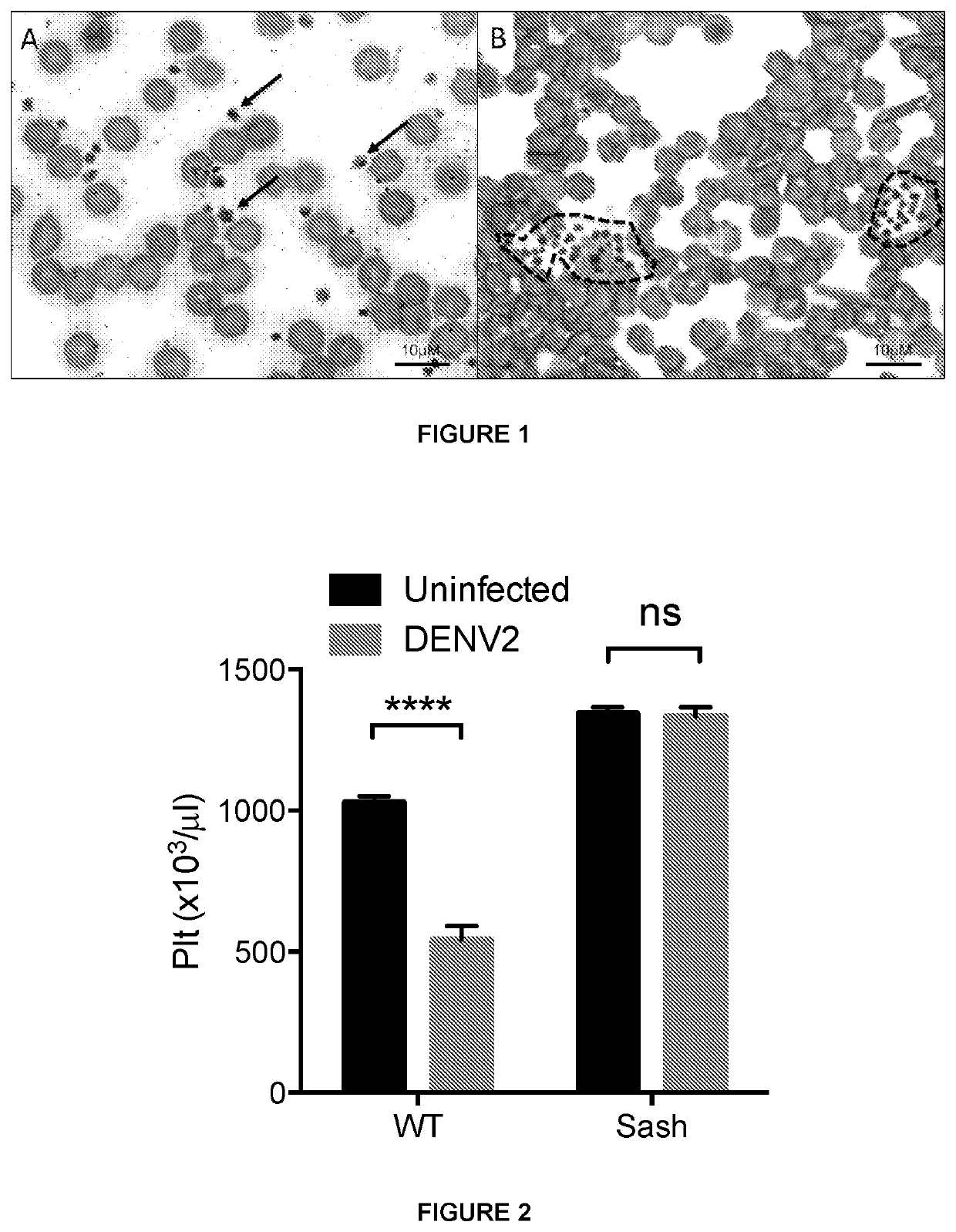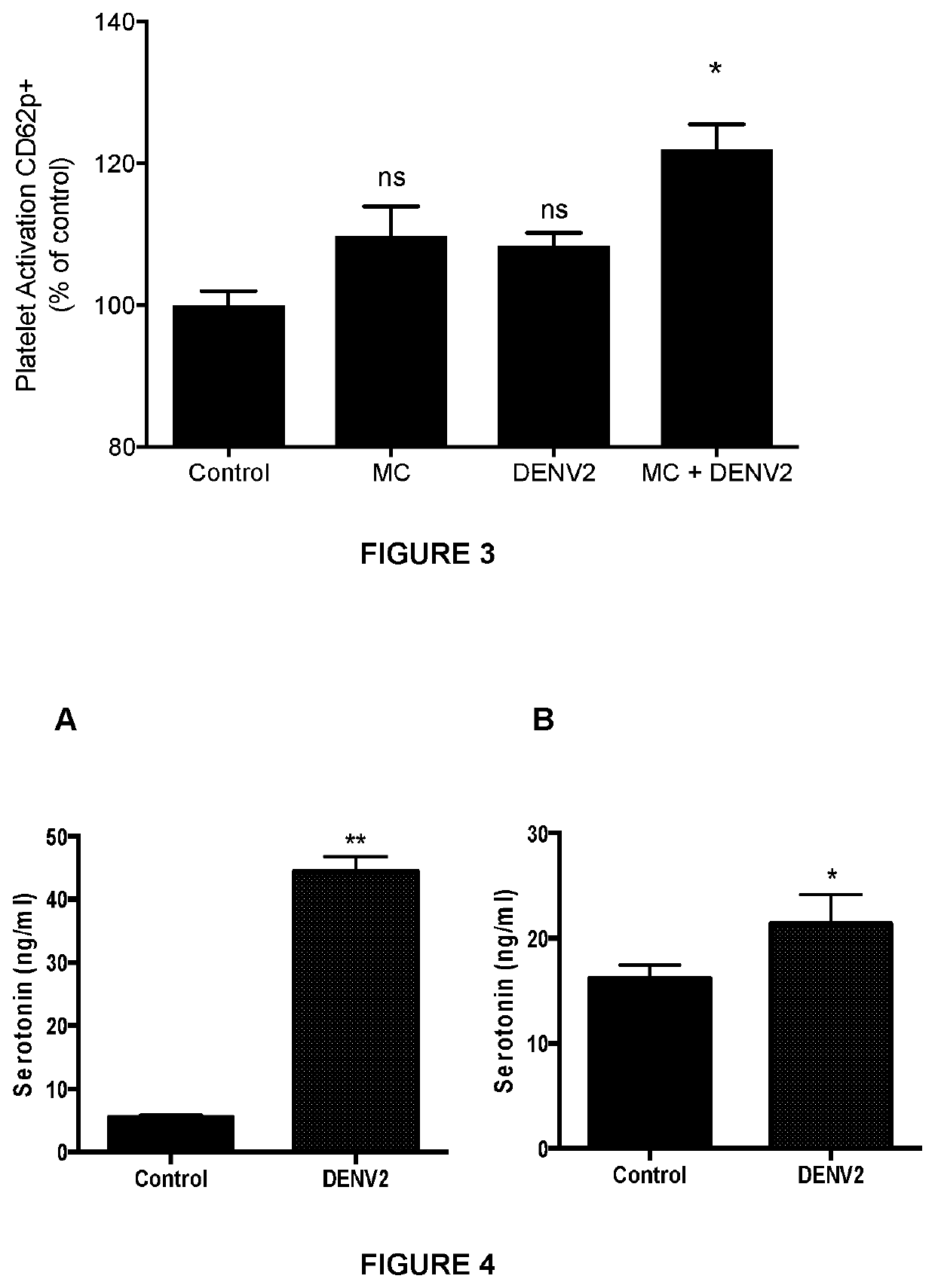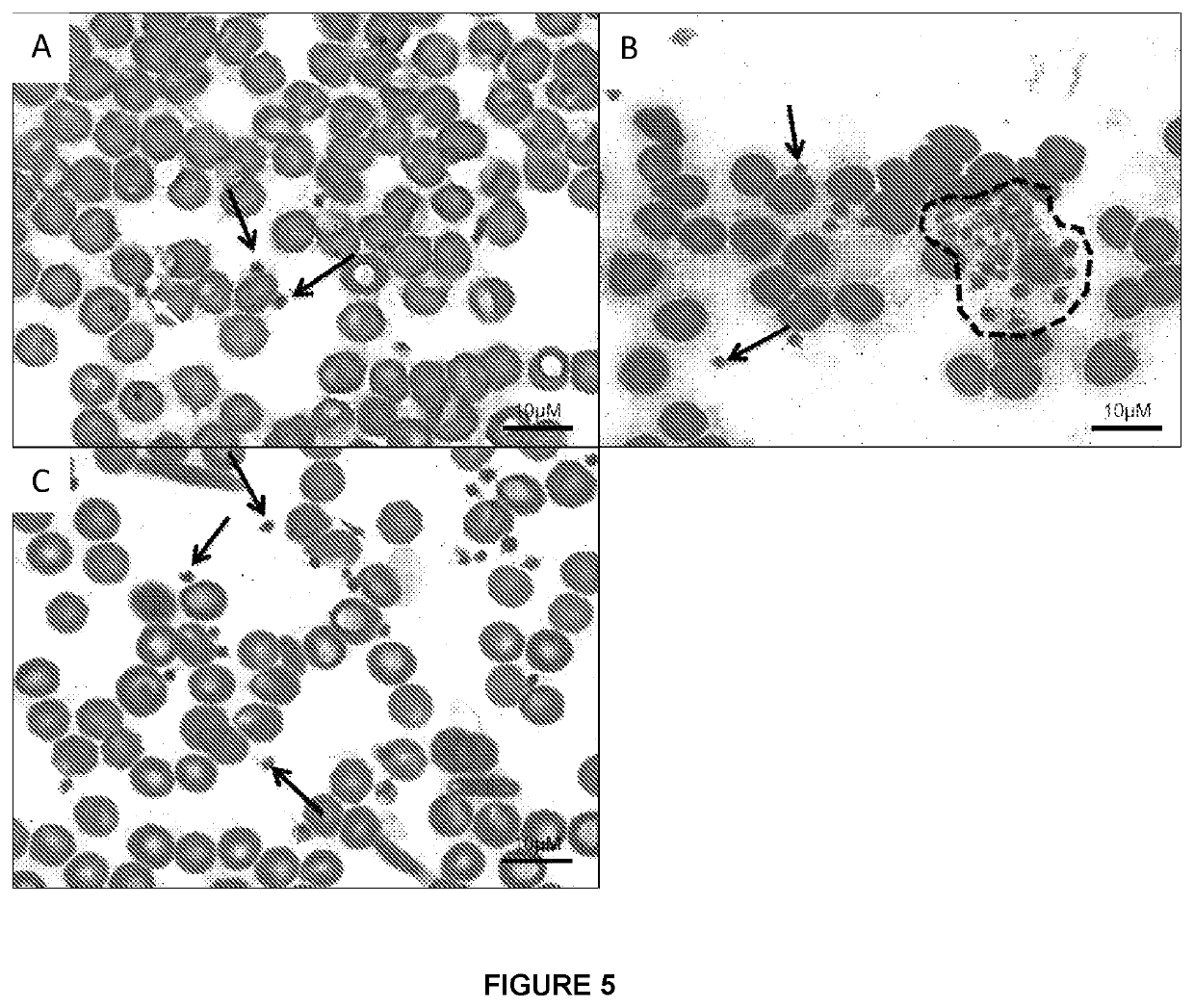Use of serotonergic drugs to treat virus-induced thrombocytopenia
a technology of serotonin and anti-viral, applied in the direction of drug composition, extracellular fluid disorder, blood disorder, etc., can solve the problems of not being able to block the effects of already released serotonin, and cost and time-consuming safety trials, so as to prevent or ameliorate the development of thrombocytopenia
- Summary
- Abstract
- Description
- Claims
- Application Information
AI Technical Summary
Benefits of technology
Problems solved by technology
Method used
Image
Examples
example 1
Dengue Infection Induces Platelet Aggregation in Mice
[0081]Wild type (WT) mice were infected via the intraperitoneal route (IP) with 106 plaque forming units (pfu) of DENV2. Blood was taken via cheek bleed 24 hours post-infection, smeared onto a glass slide, stained with eosin and methylene blue and viewed under light microscopy using a 100× magnification lens. The peripheral blood smears of infected mice revealed substantial aggregation of platelets (FIG. 1).
example 2
[0082]Mice Lacking Mast Cells do not Experience Thrombocytopenia during Dengue Infection
[0083]It has previously been shown that mast cell mediators contribute to plasma leakage during dengue infection [St John, A. L., et al., eLife 2, e00481 (2013); Syenina, A., et al., eLife 4, e05291 (2015)]. In the present example, C57BL / 6 wild type (WT) and mast cell-deficient (Sash) mice (on a C57BL / 6 background) were infected via the intraperitoneal route (IP) with 106 plaque forming units (pfu) of DENV2. Blood was taken via cheek bleed 24 hours post-infection and platelet counts were measured using an automated hematology analyzer. Platelet counts in DENV-infected wild type (WT) and mast cell-deficient (Sash) mice indicated that mice that lacked mast cells (due to a point mutation in the promoter region of the ckit gene) did not experience the thrombocytopenia that occurred in control (WT) mice during dengue infection (FIG. 2).
example 3
DENV2-Activated Mast Cells Induce Platelet Activation
[0084]Further in vitro studies were undertaken to determine if mast cell products were able to directly activate platelets. Mouse bone marrow derived mast cells (MC) were incubated with DENV2 for 2 hours. Degranulation products were isolated and used to stimulate mouse whole blood. After 15 minutes, samples were fixed with 4% paraformaldehyde for 2 hours at 4 degrees. Samples were then washed and stained for platelet marker CD41 and activation marker CD62P and analyzed through flow cytometry. It can be seen that DENV2 alone and unstimulated mast cells did not result in significant levels of platelet activation. However, DENV2 activated mast cells released mediators that resulted in platelet activation (FIG. 3).
PUM
 Login to View More
Login to View More Abstract
Description
Claims
Application Information
 Login to View More
Login to View More - R&D
- Intellectual Property
- Life Sciences
- Materials
- Tech Scout
- Unparalleled Data Quality
- Higher Quality Content
- 60% Fewer Hallucinations
Browse by: Latest US Patents, China's latest patents, Technical Efficacy Thesaurus, Application Domain, Technology Topic, Popular Technical Reports.
© 2025 PatSnap. All rights reserved.Legal|Privacy policy|Modern Slavery Act Transparency Statement|Sitemap|About US| Contact US: help@patsnap.com



